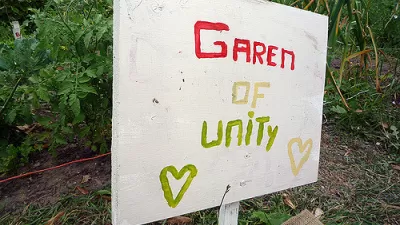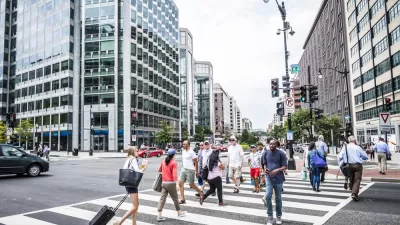Suzette Hackney, a former Detroit Free Press journalist, expresses her concern about who is getting left out of Detroit's comeback story.
Leaving Detroit in 2013 offered "a chance to step back and observe with a journalistic eye the city’s transformation," explains Hackney—"a luxury often not possible when I was reporting on murders and the city's budget crisis every day."
That perspective leaves Hackney wondering about a looming question: "Is there room for low income residents to benefit from the dazzling reinvention of their city?"
After citing some of the data that shows the city's impoverished population and acknowledging the city's ongoing bankruptcy concerns, Hackney goes on to identify how Detroit's comeback came to be story of privilege:
National media outlets have been criticized for parachuting into the city, and only showing white Detroit. But if we are painfully honest with ourselves, the growing majority of startups, businesses and restaurants attracting such broad attention, are mostly white owned. Dispatches from Detroit as the latest urban comeback story don’t often include scenes from deep inside the city’s distressed neighborhoods. Such ruin porn, as it’s called, would defeat the purpose.
And:
But it’s a tough sell to convince editors, or even bankruptcy attorneys, that tales from the ’hood—the down and out African-American hood—are important to a restructuring plan or vital to honest coverage, particularly when the stories coming out of Detroit for years were all about crime and blight, political corruption, a failing auto industry, racial disharmony, a failing school system, poverty and just straight-up hopelessness. There’s a woeful-Detroit fatigue, and understandably so. We’re tired of the bad news. We want to see Detroit’s revival, and live to talk about it.
FULL STORY: Is There Room for Black People in the New Detroit?

Planetizen Federal Action Tracker
A weekly monitor of how Trump’s orders and actions are impacting planners and planning in America.

Chicago’s Ghost Rails
Just beneath the surface of the modern city lie the remnants of its expansive early 20th-century streetcar system.

San Antonio and Austin are Fusing Into one Massive Megaregion
The region spanning the two central Texas cities is growing fast, posing challenges for local infrastructure and water supplies.

Since Zion's Shuttles Went Electric “The Smog is Gone”
Visitors to Zion National Park can enjoy the canyon via the nation’s first fully electric park shuttle system.

Trump Distributing DOT Safety Funds at 1/10 Rate of Biden
Funds for Safe Streets and other transportation safety and equity programs are being held up by administrative reviews and conflicts with the Trump administration’s priorities.

German Cities Subsidize Taxis for Women Amid Wave of Violence
Free or low-cost taxi rides can help women navigate cities more safely, but critics say the programs don't address the root causes of violence against women.
Urban Design for Planners 1: Software Tools
This six-course series explores essential urban design concepts using open source software and equips planners with the tools they need to participate fully in the urban design process.
Planning for Universal Design
Learn the tools for implementing Universal Design in planning regulations.
planning NEXT
Appalachian Highlands Housing Partners
Mpact (founded as Rail~Volution)
City of Camden Redevelopment Agency
City of Astoria
City of Portland
City of Laramie




























